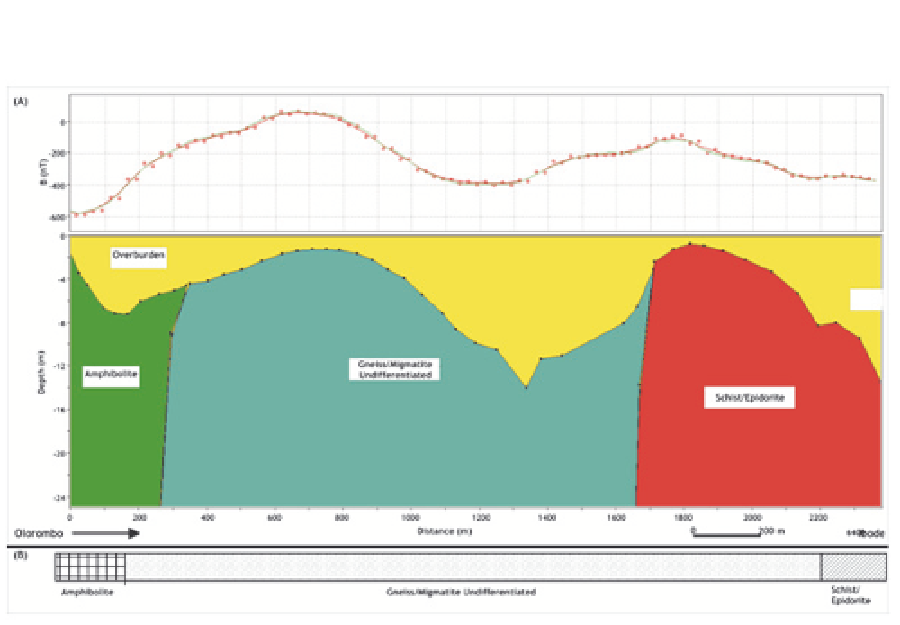Geoscience Reference
In-Depth Information
Fig. 9. The observed and calculated magnetic profile along Olorombo to Ibode
basement blocks. The contact between bodies represents structural or lithological contacts.
The model lithological contacts when correlated with the known geology show afair
correlation. The model result suggests a westward shift in the geological boundary. The
model also revealed the existence of a Quartz vein (s = 35 SI Unit) sandwiched between the
Amphibolite and the Gneiss/Migmatite Undifferentiated rocks at stations between 2400 -
2600m along the profile. The model reveals the outcropping of the Schist Epidiorite
Complex at stations 4100m and 5500m. The overburden is deepest (48m) in the Amphibolite
rock at station 400m.
Figure 11A shows the observed and the calculated anomaly for the magneticprofile along
Okepa to Eyinta and the corresponding geologic section in Figure 11B which is on the
central part of the delineated area. Three model bodies are involved in the computation and
these include the Amphibolite (s = 200 SI unit), Gneiss/Migmatite Undifferentiated (s = 100
SI unit) and Schist Epidiorite Complex (s = 300 SI unit) together with the overburden (s= 5 SI
unit) and a dyke body (s=40 SI unit). The contact between bodies represents structural or
lithological contacts. The model lithological contacts do not correlate with the known
geology probably due to the “masking” effect of the overburden. The model reveals the
existence of a dyke body (s = 400 SI unit) in the Quartzite/Quartz Schist rock just before
station 6400m. Observed also are the five fractures in the Amphibolite at stations 200, 1400,
1600, 2300 and 3000m along the profile. The modeled basement blocks magnetic
susceptibility contrast ranges between 100 - 300 SI units and reflects the variation in the
composition of the basement rocks across the profile.

Search WWH ::

Custom Search